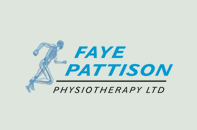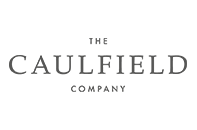How to Reduce Bounce Rate and Abandonment
 Getting people to visit your website is a challenge in itself, but something that continues to baffle many business owners and webmasters is working out how to keep them on their pages.
Getting people to visit your website is a challenge in itself, but something that continues to baffle many business owners and webmasters is working out how to keep them on their pages.
In the early days of the Internet when SEO provided a cheap and easy way to generate a huge amount of traffic, and when online competition relatively low, bounce rates and abandonment were not even considered. The approach was to get as many people on your website as possible and hope that some of them would hang around long enough to buy something.
Today, however, getting a steady stream of traffic is more challenging than ever before, and this means that businesses need to focus on improving the chances of a visitor becoming a customer. Therefore, webmaster analysts are now looking at bounce rate and abandonment stats as a priority over total organic and social traffic.
Abandonment Rate
The Abandonment Rate refers to the percentage of customers who select items to purchase but never complete the checkout. You have probably done this yourself – you have searched Google for a product, you discover a nice looking website that offers the product, maybe at a discount to other sites, you add the product to your basket, and then, for some reason or another, you decide not to purchase.
This happens to just about every single website, from the small business selling a few products on its ecommerce platform, to major players such as Amazon and Argos.
Understanding why people choose not to purchase something is key to reducing the abandonment rate. As with any movement, there may be both push factors and pull factors at play.
Push factors are problems with a website that lead to doubt. Common problems include a concern that website may not provide a secure checkout, unclear delivery and cancellation details, a price that may be beaten elsewhere, or a general distrust of a new website that has not previously been used. People also use Google to price check – ensure that your prices are competitive by checking your competitors monthly.
Bounce Rate
The bounce rate is simply the percentage of people who leave a website without reviewing any additional pages. A high bounce rate is normally an indication that a person did not like a website, although it can also be an indication that they found what they were looking for very quickly indeed.
Although bounce rate is not really understood in terms of SEO, many people have made the general assumption that high bounce rates are OK on information based websites, but may be harmful on ecommerce sites. The logic is, if an information based website provides the reader with a suitable answer, there is often no reason for them to read other pages. However, if somebody is looking to purchase a product or service, it is logical to assume that a bounce means they were not happy with what they found.
There are many reasons why a website may have a high abandonment rate or bounce rate. The following suggestions should help to tackle the most common problems that we see.
Calls-To-Action
A failure to provide a good call-to-action can result in a bounce. This is a simple solution that many people overlook. Ensure that every product page has some form of call to action – often a call to add an item to the basket. For info sites, a call to action could be a newsletter sign-up or an offer of exclusive, free information.
Mobile Unfriendly
More than 50% of all searches are now carried out on a mobile device. Any website that has a poor mobile experience will now immediately put off at least 50% of their potential new customers. Get your site mobile friendly to combat this issue.
Fast loading
Many bounces occur before the page has even fully loaded. People are impatient and if you page does not load within 10 seconds over a 3G connection, most people will abandon any attempt to do business with you. Site speed is now a ranking factor.
If your site is suffering from either of these issues, contact Freelance SEO Essex today for a free, no obligation quote to fix your problems.






















